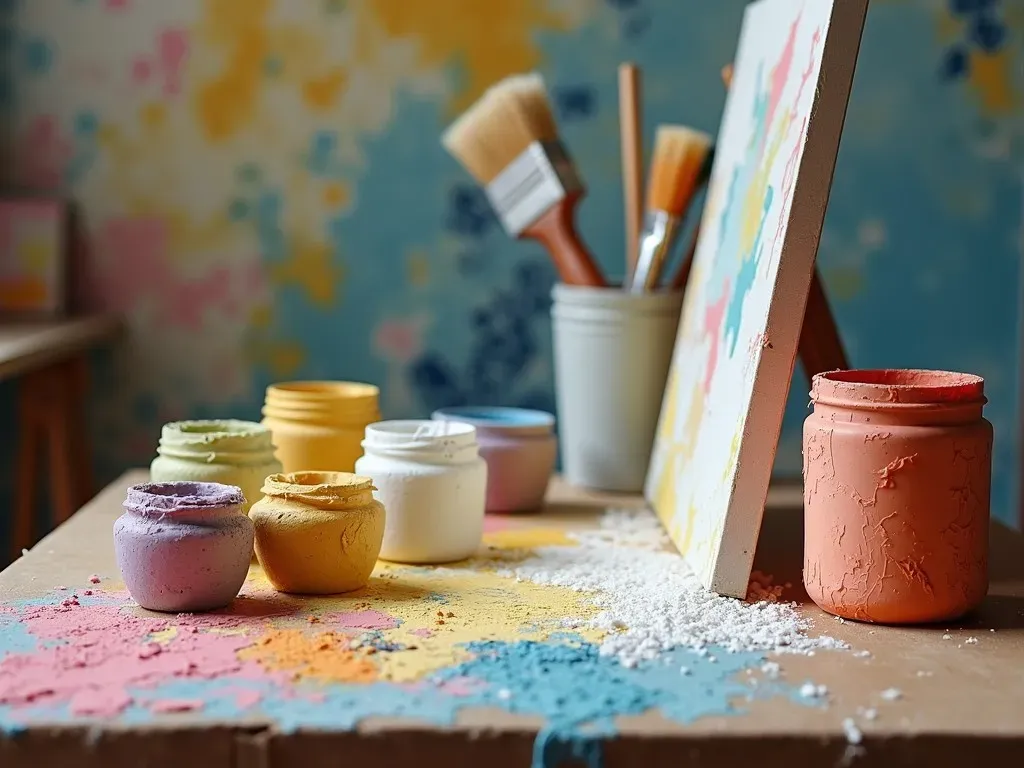Gesso for oil painting is an indispensable product that every artist should familiarize themselves with when preparing a canvas or board for their next masterpiece.
What Is Gesso and Why Is It Important?
Gesso is a mixture of substances that traditionally includes chalk, gypsum, and a binder. It serves as a primer on canvas, boards, or paper, preparing the surface for painting. This preparation is crucial for the longevity and vibrancy of your artwork. Gesso provides a smooth surface that allows oil paint to adhere better, preventing moisture from the paint from damaging the underlying canvas.
Types of Gesso
There are various types of gesso available, and understanding these differences can help you choose the best product for your oil painting projects. Below are the primary types of gesso used by artists:
| Type of Gesso | Description |
|---|---|
| Acrylic Gesso | Made with acrylic polymer; flexible and durable. Best for non-absorbent surfaces. |
| Traditional Gesso | Made from chalk or plaster and animal glue; provides a rigid surface. Preferred by classical painters. |
| Clear Gesso | Allows the canvas color to show through; great for mixed media. |
| Colored Gesso | Comes in various colors; useful for painting with transparent or opaque layers. |
Best Practices for Applying Gesso
There are standard procedures for applying gesso to ensure optimal results in oil painting. Adhering to these practices will undoubtedly enhance your artwork’s overall quality.
-
Prepare Your Canvas:
- Start with a clean, dry canvas. Use a damp cloth to remove any dust or debris before applying gesso. This will ensure a smooth finish.
-
Choose the Right Brush:
- Use a wide, flat brush to apply gesso evenly. A good choice is a 2-4 inch brush which allows you to cover larger areas quickly.
-
Apply Multiple Coats:
- For the best results, apply at least two to three coats of gesso. Allow each coat to dry for a few hours or overnight, depending on humidity levels.
-
Sand Between Coats:
- If you prefer a smoother surface for oil painting, lightly sand between applications using fine-grit sandpaper. This will eliminate any texture left by the brush and create a glass-like finish.
-
Final Drying:
- Ensure you let the last coat dry thoroughly. A good rule of thumb is to let it dry for 24 hours before starting your painting.
FAQ About Gesso for Oil Painting
1. Do I need to gesso a pre-primed canvas?
No, you don’t have to. However, many artists still apply an additional coat of gesso to enhance the surface’s properties and ensure that the paint adheres better.
2. Is there a difference between oil gesso and acrylic gesso?
Yes, oil gesso is more absorbent and flexible and can be used with oil paints, while acrylic gesso is generally more suitable for acrylic and mixed media, offering a different texture and finish.
3. Can I make my own gesso?
Absolutely! A simple recipe involves combining white acrylic paint with calcium carbonate or plaster. This DIY gesso can be customized to your preferred texture.
4. What is the best gesso for oil painting?
The best gesso can vary based on the artist’s preference, but traditional gesso is often favored for its strong adherence properties, while acrylic gesso is popular for its versatility and ease of use.
Gesso Application Techniques
There are several Techniques that you can consider when applying gesso for oil painting. This section provides an overview of various methods to optimize the priming process.
1. Brushing Techniques:
- Use horizontal swipes for the first coat to create a base layer.
- For subsequent coats, use vertical strokes for a different texture and depth.
2. Sponging:
- For artists looking for a unique texture, you can use a sponge to apply gesso unevenly. This method can create an organic feel to the primed surface.
3. Troweling:
- Use a putty knife or a palette knife to apply gesso in thick layers, engaging in a more sculptural method. This is useful if you want to create textured patterns on the canvas.
Understanding the Durability of Gesso
It is essential to understand that gesso does not just prepare a surface; it also interacts with the oil paint in unique ways. Here’s what you need to keep in mind:
- Flexibility vs. Rigidity: Traditional gesso provides a rigid surface that can crack over time. On the other hand, acrylic gesso is more flexible, making it less susceptible to damage from substrate movements.
- Color Retention: Gesso sets the stage for your color’s vibrancy. The brighter the gesso, the more luminous your colors will appear.
Gesso Storage and Shelf Life
- Storage: Keep your gesso in a cool, dry place away from direct sunlight. Seal it tightly to prevent drying out.
- Shelf Life: Generally, gesso has a shelf life of 1-2 years if stored properly. Always check for any consistency changes before application.
Conclusion
In your journey as an artist, understanding and utilizing gesso for oil painting is pivotal. It’s the key to preparing a durable, versatile surface that showcases your creative vision. Incorporating the right techniques and practices will not only enhance the longevity of your artwork but also give you the best experience while creating.
For more detailed guidance, check out this comprehensive resource: The Ultimate Guide to Choosing the Perfect Gesso for Oil Painting.
By following the right procedure and choosing suitable materials, you can elevate your oil painting journey and unleash your full artistic potential!
